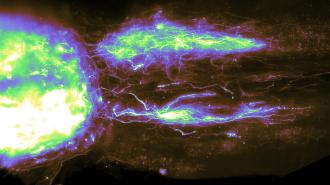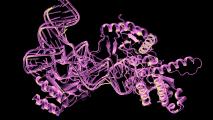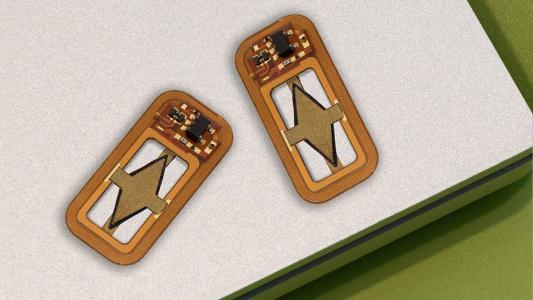A new gene therapy that guides nerve regeneration across complete spinal cord injuries restored the ability to walk in paralyzed mice — but it comes with a big caveat to consider.
More research is needed, but the treatment could one day be combined with spinal cord stimulation to reverse paralysis in people.
The background: In 2018, researchers from UCLA, the Swiss Federal Institute of Technology (EPFL), and Harvard published a study in Nature that was simultaneously exciting and disappointing.
They showed how to regrow axons — the threadlike parts of a nerve cell that carry impulses to other neurons — across complete spinal cord injuries in mice. They thought that this would restore the paralyzed animals’ ability to walk — but mysteriously, it didn’t.
A specific kind of neuron had to regrow its axons and they had to reconnect to their natural target.
Back to the lab: To figure out why the nerve regeneration didn’t reverse paralysis, the researchers studied mice with partial spinal cord injuries, which can, sometimes, repair themselves naturally.
“We use single cell technologies, which allow us to study every kind of cell in the spinal cord and every kind of neuron that is in the spinal cord and how it reacts when animals spontaneously recover the ability to walk,” said first author Jordan Squair, a neuroscientist at EPFL.
They discovered that one specific kind of neuron had to regrow its axons, and those neurons had to reconnect to their natural target region in the lumbar region of the spinal cord to reverse paralysis in mice.
Guided nerve regeneration: Armed with that new information, the researchers developed a “multipronged” gene therapy that triggers the regeneration of axons from the right nerves and the expression of chemicals that guide the axons to their natural destination in the spinal cord.
Then they tested the gene therapy in 30 mice with complete spinal cord injuries. Eight weeks after sustaining their injuries, 27 of the mice were walking about as well as mice who’d naturally recovered from partial spinal cord injuries, according to a new study published in Science.
The cold water: As was the case with the 2018 study, the part of the updated gene therapy that triggers the nerve regeneration was administered two weeks before the mice were paralyzed (parts to help guide the axons’ growth were administered two days after the injury).
This provides really useful insights into how spinal damage and regeneration can work, but a treatment to reverse paralysis that has to be administered two weeks before a person actually becomes paralyzed isn’t going to help anyone, so more research is needed to figure out how to translate these discoveries to the clinic.
Looking ahead: The holy grail of regeneration in complete spinal cord injuries is to restore people’s ability to walk as well as they could before the damage, and even if this gene therapy makes it to the clinic and performs as well in people as it did in mice (a big if), it seems that wouldn’t be the case.
“We believe a complete solution for treating spinal cord injury will require both approaches.”
Grégoire Courtine
This isn’t the only approach the group is pursuing, though — the researchers have also made huge strides reversing paralysis in people using spinal cord stimulation, and they envision eventually combining the two therapies.
“We believe a complete solution for treating spinal cord injury will require both approaches — gene therapy to regrow relevant nerve fibers, and spinal stimulation to maximize the ability of both these fibers and the spinal cord below the injury to produce movement,” said senior author Grégoire Courtine, a neuroscientist at EPFL.
We’d love to hear from you! If you have a comment about this article or if you have a tip for a future Freethink story, please email us at [email protected].






